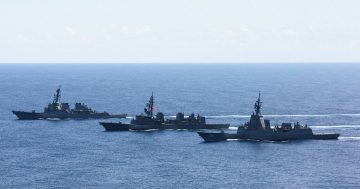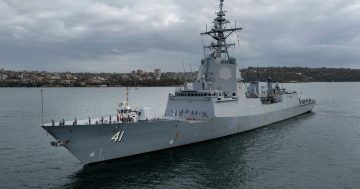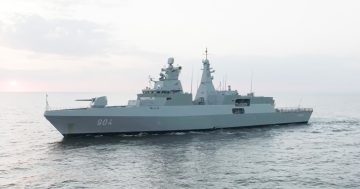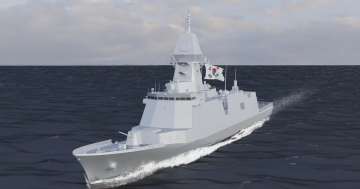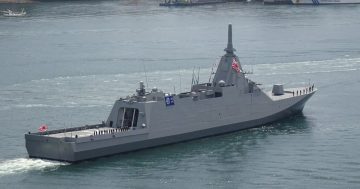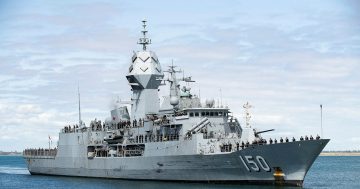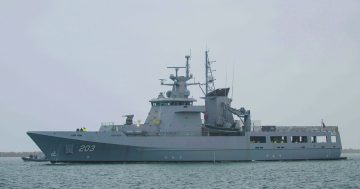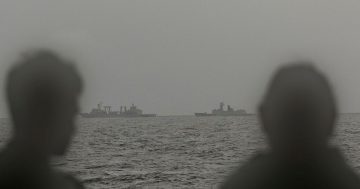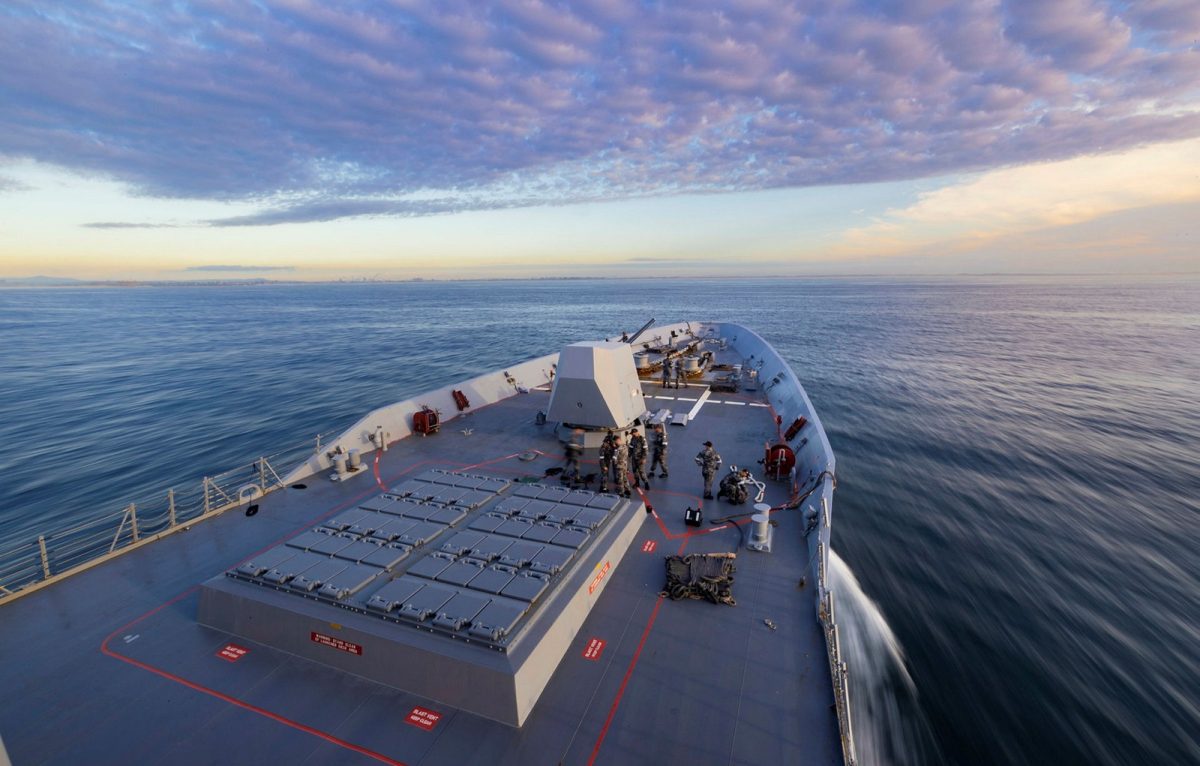
The Navy’s three Hobart class destroyers will soon undergo a major upgrade to their weapons and combat systems. Photo: ADF.
The Australian Government has released the public findings and its response to the independent analysis of the Royal Australian Navy’s surface combatant fleet.
As a result of the analysis, the government has launched its Enhanced Lethality Surface Combatant Fleet response, which will see the Navy’s surface combatant fleet grow from the current 11 vessels to 26 ships, including six new optionally crewed vessels.
Prior to the review, the Navy’s shipbuilding plan would have seen nine Hunter class frigates replacing the eight current Anzac class frigates from 2030 to 2045, and 12 or more Arafura class lightly armed offshore patrol vessels (OPV) replacing the Armidale class, Cape class and Evolved Cape class patrol boats from 2024 to 2030.
Derivates of the Arafura class were also identified as a solution for secondary duties, including marine survey and mine warfare, and as parent vessels for autonomous aerial and underwater vehicles.
The Navy also has three Hobart class destroyers in service, which will soon undergo a major upgrade that will see major improvements to their weapons and combat systems.
The new plan will see the number of Hunter class vessels to be acquired reduced to six, with the last vessel to be delivered in 2043, 11 new general purpose frigates with the first of that class to be delivered by 2030, and six new large optionally-crewed surface vessels (LOSV) acquired.
Two of the Anzac class frigates will be decommissioned, including HMAS Anzac, which is not expected to be deployed again. The remaining six will stay in service into the early 2030s.
Additionally, the planned buy of 12 Arafura class OPVs will be reduced to six, and those vessels will be included in a planned boost to the minor war vessel fleet to 25 boats to conduct border security and other constabulary missions.
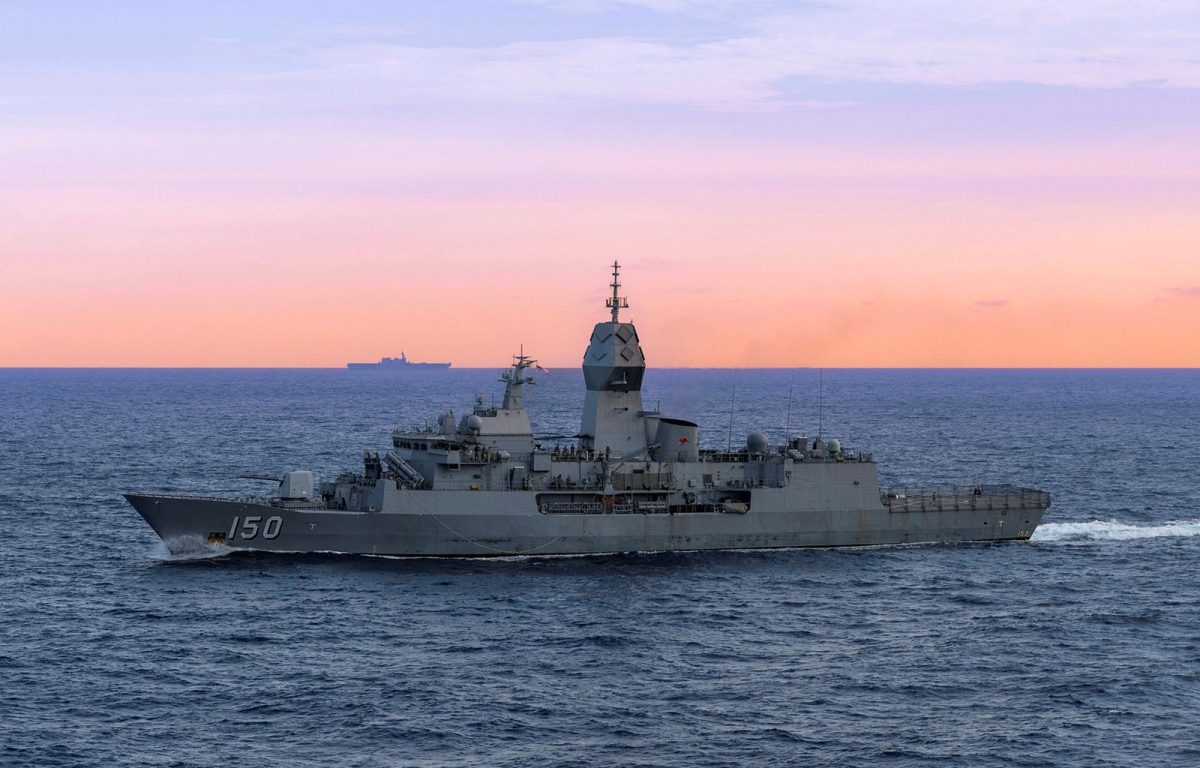
The Navy is having trouble crewing its existing vessels, with reports that two Anzac class frigates have been tied up for some time in WA. HMAS Anzac (pictured) will soon be decommissioned. Photo: ADF.
The desire to maintain a continuous shipbuilding industry will see the replacement of the three Hobart class destroyers follow the last of the Hunter class frigates at the Osborne Shipyard in Adelaide in the early 2040s.
The DSR also recommended the consolidation of the Henderson shipbuilding precinct near Fremantle in WA, and it is here the general-purpose frigates and LOSVs will be built.
Few details on designs for the new vessels have been released, although Deputy Prime Minister and Defence Minister Richard Marles did say they would be a “new class” of ship that had been shortlisted to four possible designs from Spain, Germany, South Korea and Japan, that a design would be selected in 2025, and that the first three vessels will be built offshore.
He also said the LOSVs would be developed in conjunction with the US Navy, would be armed with missiles, provide a significant increase in the Navy’s vertical launch capability, and would enter service in the mid-2030s.
Conducted by an Independent Analysis Team led by retired US Navy Vice-Admiral William Hilarides, former Secretary of the Department of Finance Rosemary Huxtable and former Commander Australian Fleet Vice Admiral Stuart Mayer, the analysis was born out of last year’s Defence Strategic Review (DSR) and its assessment that a continuous naval shipbuilding program is essential for Australia’s sovereign capability.
The findings of the review were delivered to government for consideration last September, and the analysis agreed with findings in the DSR that the current and planned surface fleet is inadequate for the future threats Australia will face.
The independent analysis found the previous Coalition Government had failed to adequately fund naval acquisition programs, including the Hunter frigate program, which it says would have cost some $65 billion, $20 billion more than forecast.
To fund the accelerated build of the general purpose frigates and other additional vessels, an additional $1.7 billion will be added to the Defence Budget over the forward estimates and $11.1 billion over the next decade. This will see a budget of $54.2 billion allocated for the acquisition and sustainment of the surface fleet out to 2034.
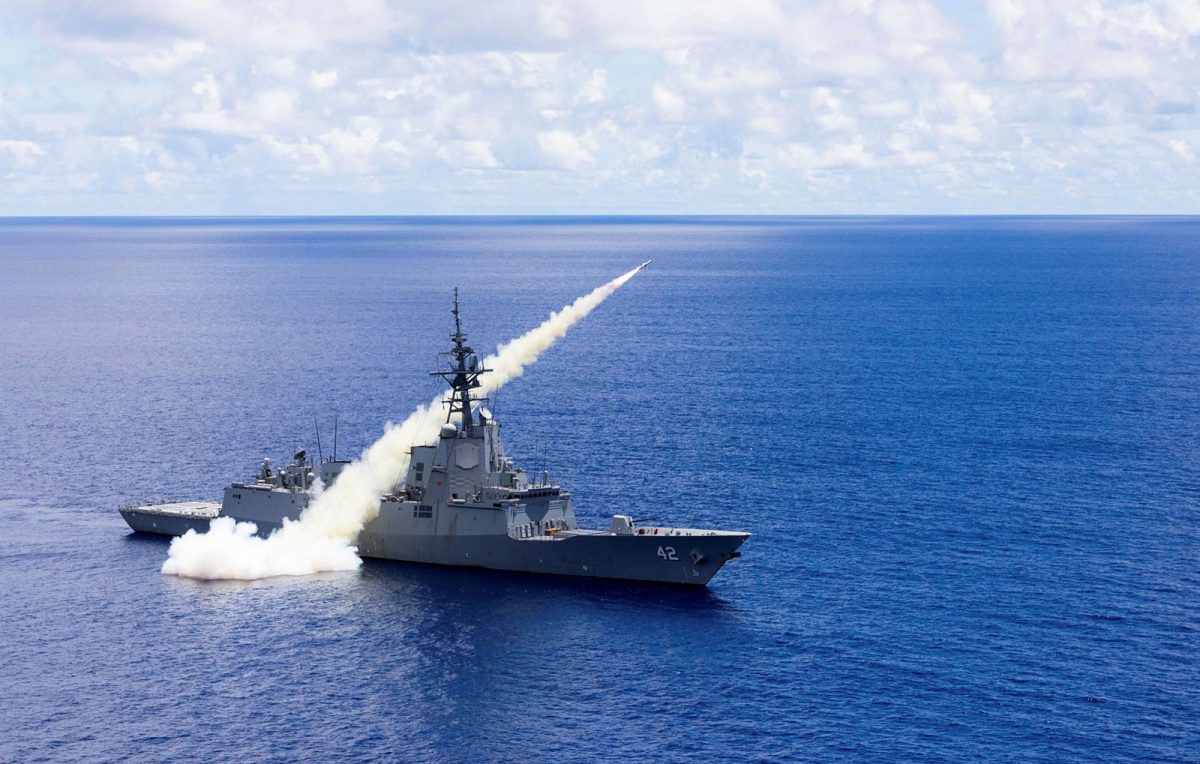
The Defence budget will require an $11 billion boost in funding to fund the ambitious expansion of the Navy’s surface fleet. Photo: ADF.
Deputy Prime Minister and Defence Minister Richard Marles said the changes will ensure the Navy is optimised for operations in our current and future environment, underpinned by the meticulous assessment conducted by the Independent Analysis Team.
“Australia’s modern society and economy rely on access to the high seas: trade routes for our imports and exports, and the submarine cables for the data which enables our connection to the international economy,” he said.
“The Royal Australian Navy must be able to ensure the safety and security of our sea lines of communication and trade routes as they are fundamental to our way of life and our prosperity.”
Chief of Navy Vice Admiral Mark Hammond added, “A strong Australia relies on a strong Navy, one that is equipped to conduct diplomacy in our region, deter potential adversaries, and defend our national interests when called.
“The size, lethality and capabilities of the future surface combatant fleet ensures that our Navy is equipped to meet the evolving strategic challenges of our region.”
Original Article published by Andrew McLaughlin on Riotact.



